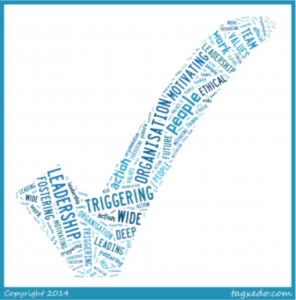29 Jun Tell stories to be an effective 21st century leader
To be an effective 21st century leader is to grasp the inter-relatedness of everything and connect deeply with your people, customers, communities, markets, and the surrounding issues. And to make sense of this complexity and motivate people by telling stories.
Being this type of leader means engaging with peoples’ minds and hearts. And this requires transmitting your values, one of the most challenging tasks a leader faces. A riveting recent book shows why and how storytelling is a proven way of being an effective 21st century leader, including transmitting your values.
As Stephen Denning writes in The Leader’s Guide to Storytelling “it’s easy to slip into moralizing and dictating behaviour”. While tasks can be dictated and directed, behaviour – the outward manifestation of values – can only be influenced.
 Denning’s fascinating book shows how storytelling can be used to handle some of most difficult areas of leadership such a triggering organisation-wide action, motivating people to work as a team, fostering deep ethical values, and leading people into the future.
Denning’s fascinating book shows how storytelling can be used to handle some of most difficult areas of leadership such a triggering organisation-wide action, motivating people to work as a team, fostering deep ethical values, and leading people into the future.
In an age of what has been called conscious capitalism and also customer capitalism (1) it seems to me that my clients in corporations, governments and professional services firms, and those who lead the companies on whose boards I sit, will benefit greatly by learning to add narrative (aka storytelling) as a leadership skill.
This post explains what stories are and how to use them. For an excellent and complete exposition on the topic, buy a copy of Stephen Denning’s book and keep it close at hand.
Nature of storytelling
A story and narrative are synonymous, being an account of events that are causally connected in some way.
A story can be told in words, pictures, mime and video. Storytelling is as old a humankind and as modern as this decade of the 21st century.
At its simplest, telling a story is to give an example. But powerful organisational stories are much more:
- A well-told story catches and holds the attention of an audience by stimulating all the senses and putting the story into a memorable context.
- There’s no one size fits all in effective organisational storytelling. Negative stories are used to grab attention. Positive ones to get action. And neutral ones to describe and explain facts such who, what and how.
- The narrative is a natural complement to logic and analysis. Human sciences like psychology have long known this. Now management is catching up; storytelling as a crucial leadership tool is coming of age.
Elements of a top story
In an organisational setting a story should be told in the way you normally speak to an individual; it is not a presentation or speech. It should be told truthfully, in a carefully prepared and scripted way.
At the time of telling a story, it’s essential to connect with your audience as individuals. Gestures, liveliness and a minimum of visual aids are vital ingredients. As are knowing your audience and being comfortable with your own style.
Being an effective 21st century leader
The title of this post suggests that being a good storyteller is to be an effective 21st century leader. Is this claim too much of a stretch? I don’t think so.
To succeed as a leader in today’s world requires an interactive leadership style. Not even in the military is command-and-control any longer regarded as the only or even the dominant, style for effective leadership.
Hans Christian Andersen, Norman Lindsay, Walt Disney and Steve Jobs have taught all of us about captivating storytelling.
Now it’s time for all leaders to embrace storytelling.


